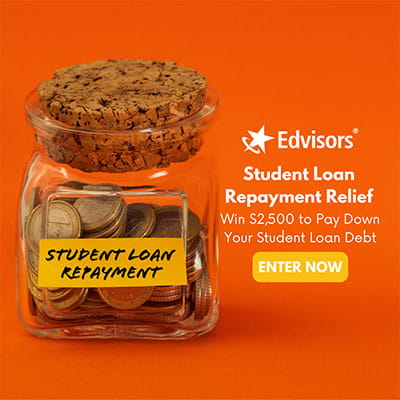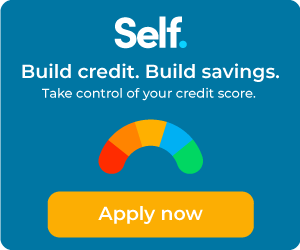Ways to Pay for Law School
Paying for law school can be a stressful journey, though perhaps not as nerve-racking as the Bar exam. As you weigh the decision to pursue a law degree, it's crucial to consider the significant tuition costs. But don't worry, we're here to ease your worries by providing information on financial options for law school students. In this article, you'll find a wealth of information on scholarships, grants, student loans, and affordable law programs. Whether you're a prospective, current, or graduating student, this page will serve as a valuable resource to help you fund your law school education.
Can You Get Scholarships for Law School?
Yes, scholarships for law school are definitely available even if you’ve heard they may be harder to come by. Always check in with the financial aid office to see if they have any available information regarding grants and scholarships for law students. The law school price tag makes scholarships so much more enticing, and it makes sense because scholarships, like grants, do not have to be paid back. Check out our list of prominent law school scholarships below:
American Bar Association Legal Opportunity Scholarship
This scholarship for first-year law students awards 10-20 diverse law students $15,000 in aid over their three years in law school. These scholarships can help cover living expenses while also decreasing the amount of federal student aid you may need.
Arent Fox Diversity Scholarship
Law firm Arent Fox offers a $20,000 scholarship and salaried position to diverse second-year law students. The first $10,000 is paid during the second-year summer, and the other $10,000 is paid once the student returns to the firm as an associate ensuing graduation. Locations are in Boston, DC, Los Angeles, New York City, and San Francisco.
MALDEF Law School Scholarship Program
The Mexican American Legal Defense and Educational Fund (MALDEF) provides $2,000 scholarships to law students seeking to advance the civil rights of the Latino community in the U.S. Each year, 5-15 law school scholarships have been awarded.
MCCA Lloyd M. Johnson, Jr. Scholarship Program
This diversity scholarship program is open to women and diverse students interested in corporate law. $10,000 scholarships are awarded to recipients for their first year of law school. A scholarship like this can help cover living expenses not covered by federal student aid.
Sidney B. Williams, Jr. Scholar Program
The Foundation for Advancement of Diversity in IP Law provides a $10,000 per year tuition grant to select scholars of the Sidney B. Williams, Jr. Scholar Program for up to three (3) years. Financial need, merit, and interest in intellectual property law are considered.
Are There Grants for Law School?
Grants that help pay for law school are typically awarded for law school based on financial need. And, like scholarships, they do not (generally) need to be paid back. Grants may be used to lighten the burden of paying for law school, which is why it’s worth exploring your options.
Here's the catch: searching for grants for law school can be a challenge. This is because most grants helping to pay for law school are sponsored by the law schools themselves. This means that your best bet for keeping your law school debt as low as possible is going to come from reaching out to your schools of interest. Contacting the school's financial aid office is typically a good place to start.
Applying for Grants
When looking at your options for federal student aid, keep in mind that there are many different grants available; sometimes, there are grants specific to those attending law school. Check with your school’s financial aid office and see what information they have regarding available grants.
The Grant Application Process
When applying for grants, there are many similarities to applying for private and federal loans and many differences. The process typically goes something like this:
- Find the grant
- Complete grant application
- You are either approved or denied
IF APPROVED
- Receive funds
- Use funds to pay for school, housing, etc.
How to Reach Out to Financial Aid Offices
It is important to remember that there are resources available through your school’s financial aid office. Financial aid offices can sometimes be tricky to work with, depending on the school that you are applying to/currently enrolled in. Here are some tips we have when reaching out to your school’s financial aid office:
- Write down your questions in advance
Depending on the time of year, the financial aid office can be very busy, and whether you seek help covering your law school costs in person or over the phone or email, it is valuable to your time to prepare.
- Sometimes a well-worded email is all it takes
If the financial aid office is very busy, but you have important questions, try sending an email instead. Put enough information in the email that the financial aid office worker can get the scope of your situation and help you with what you need.
- Always ask about available grants and scholarships
Keep in mind that the people helping you at the financial aid office are employed to assist students through the process. Many of them have information regarding available scholarships and/or /grants that could help you cover living expenses, existing student loan debt, or upcoming law school expenses.
Best Student Loans for Law School
Depending on where you decide to attend law school, your tuition costs could fall somewhere $100,000 and $200,000 to cover three (3) years of study. In addition to that, tuition doesn’t include other expenses such as housing, food, supplies, etc. With so many costs to account for, it’s quite evident that most aspiring lawyers should weigh their loan options before making any decisions on how they should pay for law school. Next, we break down the differences between federal student loans and private loans for law school.
Federal Loans for Law School
If you would like to use federal student aid loans for your law school education, you will have your choice between the Federal Direct Unsubsidized Loan and the Federal Direct PLUS Loan for Graduate Students, better known as Grad PLUS. We break these down below:
Federal Direct Unsubsidized Loan
This federal student aid loan permits law students pursuing a law degree to borrow up to a total of $20,500 each academic year, and the aggregate borrowing limit is $138,000. Your lender for this loan, as with all federal loans, is the U.S. Department of Education. Interest rates are fixed, and interest rates and loan fees vary from year to year as determined by the government. The interest rate for loans first disbursed on or after July 1, 2023 through June 30, 2024 is 7.05% for 2023 - 2024. The loan fees for loans first disbursed on or after Oct. 1, 2023 through Sept. 30, 2024 is 1.057%.
Federal Direct PLUS Loan for Graduate Students
With this federal student aid loan, law students may borrow up to the cost of attendance (COA) minus other aid. Interest rates on federal loans are fixed, and interest rates and loan fees vary from year to year as set by Congress. One important difference here is that borrowers must not have adverse credit history, as defined by the U.S. Department of Education. A cosigner, or endorser, may be required to secure the loan. The interest rate for federal loans first disbursed on or after July 1, 2023 through June 30, 2024 is 8.05% for 2023 - 2024. The loan fees for loans first disbursed on or after Oct. 1, 2023 through Sept. 30, 2024 is 4.228%.
Some additional perks about both of these federal loans include:
- The ability to use income-driven repayment plans
- Options to postpone payments, if needed (i.e. deferment or forbearance)
- Consolidating through the Federal Direct Consolidation Loan program
- Potential forgiveness through the PSLF program, also known as Public Service Loan Forgiveness.
To apply for federal loans, make sure you (1) complete the FAFSA, (2) wait for your financial aid award letter from your school which will include your federal student loan eligibility, and then (3) choose to accept or reduce your loan amounts.
Private Loans for Law School
The truth is that federal loans may not cover all of your costs, and private student loans might be necessary to cover the difference. If you find that private loans are the option of choice for you to help pay for a law degree, we’ve got you covered. We work with many lenders who offer loans you might benefit from. Visit our lenders page to see if any of the options work to help you pay for law school. You’ll find flexible repayment options with different loan terms and even income share agreements (ISAs), which prevent you from paying more than you can afford.
Furthermore, private loans come with their own perks.
- You may borrow up to the cost of attendance (COA) minus any other aid you receive while enrolled in school
- Several lenders offer zero origination fees, and many have lower interest rates than federal programs
- You may use a cosigner to help you qualify or to potentially lower your interest rate. To determine if you're eligible for a private student loan, apply with a reputable lender. You can usually get pre-qualified in a matter of minutes.
Note: Remember Public Service Loan Forgiveness? If your goal is to take advantage of the PSLF program after law school, it's important to know that private loans cannot be forgiven by the federal government. That is only for Federal Direct Loans. So if you took out Federal Direct Loans AND private loans, you could still benefit from the PSLF program.
How Much Does Law School Cost?
According to AccessLex Institute® (AccessLex), the average cost of tuition and fees for a full-time law school student at a private law school was $49,370 in 2019. Full-time public law school students on average paid less than their private law school counterparts. In addition, for public law school students, costs widen for students who are non-residents. Full-time public non-residents averaged $41,780 for tuition and fees, whereas students who were residents at public law schools averaged $27,710.
Here are some questions that you might want to ask if the price to pay for law school is a major factor for you.
- Am I looking to attend a private or public law school?
- Are there reputable schools within my state of residence I’d be willing to attend?
- Could I get residency in my law school’s state before finishing my degree?
- Are the possibilities greater with one school over another, despite the costs?
- Are there grants available for students at schools I’m interested in?
Most Affordable Law Schools
grants, it is possible that tuition and fees might not be a good indicator of your out-of-pocket costs. U.S. News & World Report put together a list of the top 10 law schools that provide the most tuition assistance, and we want to break it down for you.
The percentages represent the amount of grant recipients who received funds covering more than half of tuition during the 2018-2019 school year. For grant recipients at these law schools, paying less than half of the expected tuition is common.
Most Affordable Law Schools 2018-2019
| College | % of grant recipients with funds covering more than 50% of tuition |
Tuition and fees per year |
|---|---|---|
| Pennsylvania State University - Carlisle (Dickinson) | 93.2% | $50,582* |
| Pennsylvania State University - University Park | 90% | $50,984* |
| Belmont University | 88.2% | $44,470 |
| University of Nevada - Las Vegas | 85.6% | $27, 023 in-state; $39, 923 out-of-state |
| George Mason University | 84.7% |
$25,254 in-state; |
| University of Nebraska - Lincoln | 81.3% | $16,078 in-state; $36,918 out-0f-state |
| University of Illinois - Urbana-Champaign | 80.6% | $38,118 in-state; $48,118 out-of-state |
| Washington University in St. Louis | 79.3% | $57,445 |
| Villanova University | 78% | $46,535 |
| Liberty University | 77.8% | $36,862 |
Source: U.S. News and World Report, for illustration purposes only
*This number represents the tuition and fees per year for in-state and out-of-state law students
How to Pay for Bar Exam Expenses
Bar exams are not cheap, and preparing for it isn’t cheap either. Most people won’t have sufficient funds put away to account for bar exam expenses, but there is financial help available for aspiring lawyers. Bar loans exist to help law school students getting ready for the big test cover the cost of the exam, exam prep, and even living expenses.
Note: You can cover the cost of your bar exam expenses with a private student loan lender or a Federal Grad PLUS Loan; however, you will have to meet more conditions with the federal loan, and you may not be able to cover as many expenses.
Refinance Law School Loans
If you're looking to refinance your law school loans, you've come to the right place. We work with some of the best lenders in the industry to provide you with competitive rates and flexible repayment options. We encourage you to check out our lenders and see if any of their offerings work for you.
Also, if you're considering consolidating, we recommend that you check out, "Should I Consolidate My Student Loans?" Refinancing and consolidating aren't exactly the same thing, and we educate you on the differences between the two, pros and cons of each, and more.
What to Read Next
Best Private Student Loans for April 2024
Medical Residency and Relocation Loans
How to Pay for Pharmacy School
Student Loans for Graduate School
















